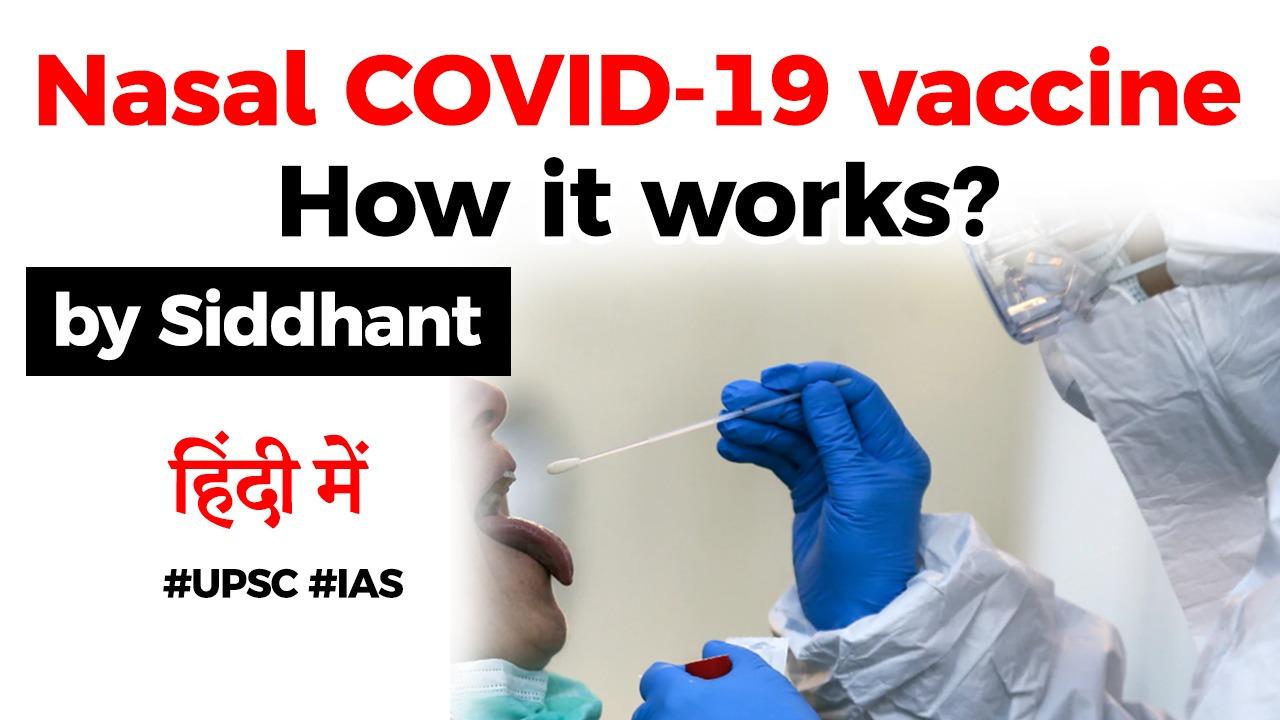Table of Contents
VACCINE
- While most of the 160 Covid-19 vaccine candidates under various stages of development are conventional intramuscular injection, several research groups and firms, including in the United States, Canada and India, are working on nasal coronavirus vaccines.
- These types of vaccines will be delivered to the respiratory tract, either via a nasal spray or aerosol delivery.
WORKING
- Since coronavirus is a respiratory infection and invades the airway, scientists from the UK’s Oxford University and Imperial College and US’ Yale University have said administering a vaccine at the entry points would train the mucosa to identify Covid-19 and block it from getting through.
- Scientists have identified two specific types of cells in the nose as the likely initial infection points for SARS-CoV2.
WHAT IS A NASAL/MUCOSAL VACCINE?
- Mucous membranes are squishy tissues that line the surfaces of internal organs like lungs and respiratory tract and catch pathogens that try to get into the body.
- Intranasal vaccines are delivered to the respiratory tract, spritzed through the nose or mouth, to target the immune cells that are found around the mucosal tissues.
- While an intramuscular vaccination mainly induces an antibody response, a nasal vaccination is beneficial as it triggers mucosal, as well as systemic immunity. Moreover, intranasal vaccination may also offer protection at other mucosal sites such as the lungs, intestines and genital tract.
HOW WILL COVID-19 NASAL VACCINES WORK?
- T cells and B cells are the major cellular components of the body’s immune response. In normal circumstances, upon vaccination, B cells would provide antibodies — called IgG — to search for pathogens. Other cells, called T cells, either helps B cells produce antibodies or seek out and destroy infected cells.
- In case of intranasal vaccination, the B cells that reside around mucosal tissues can make another type of antibody — called IgA — that plays a large role in heeling gut and airway pathogens. Nearby T cells can then memorise the features of specific pathogens and patrol the places they first encountered them.

HOW HAVE SCIENTISTS REACTED?
- Sarah Gilbert, professor of vaccinology at Oxford University, also said that oral or nasal vaccination would have much stronger mucosal response. “This takes the vaccine itself right down into the lungs where it can access the same tissue that would be reached by the virus infection,” she said.
- However, she had a word of caution also, saying that delivering a vaccine through the nose “is actually getting very close to the brain”. “Putting it down into the lungs, you’re exposing a very large surface area to the new entity,” she further said.
Latest Burning Issues | Free PDF






















 WhatsApp
WhatsApp